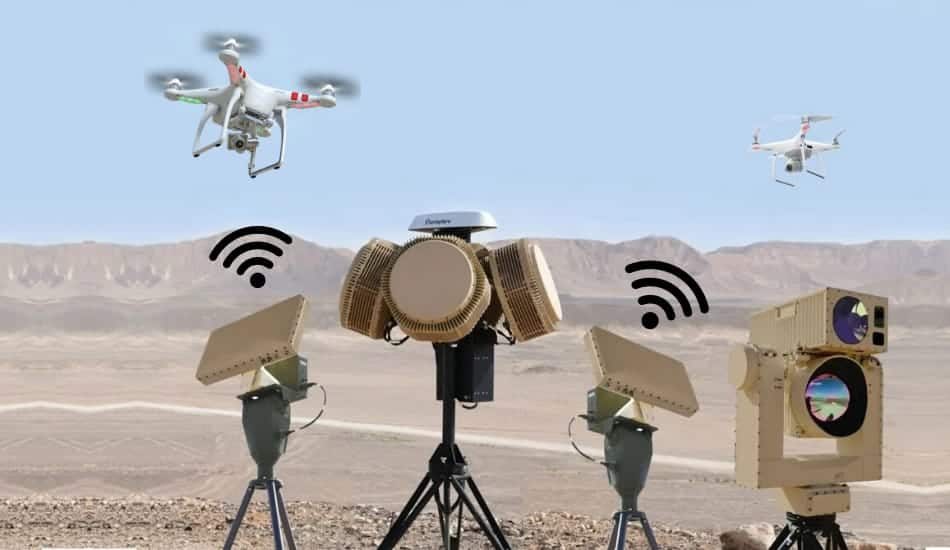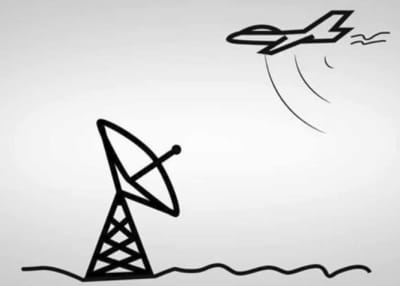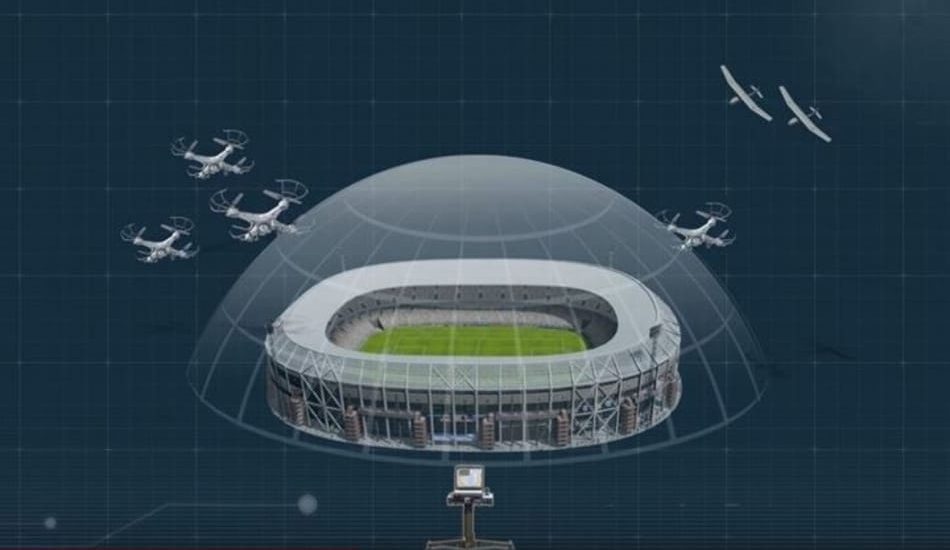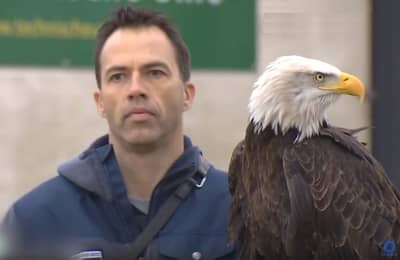Can Radars Detect Small Drones?

Drones are becoming more and more powerful. The possible flight altitude, range, endurance, flight speed and navigation precision have increased significantly in recent years. And they can transport more and more mass. In addition, drones are cheap, easy to obtain, or available as a kit. No wonder that they are becoming increasingly popular in both the commercial and private sectors.
At the same time, the number of incidents is increasing: drones are entering restricted-flight zones, for example at the airport or during major events such as rock festivals or soccer games. Therefore, it raises the question of security and whether the small drones can be detected by radars?
So Can Radars Detect Small Drones? Short answer is YES! Today’s radars can detect small drones, if the radar is designed for it. There are companies that produce super radars with high resolution that can continually cover a volume of airspace pace with which they can detect small drones up to 5km away.
What Is Radar?
With radar you can see something far away without seeing it. This is also called a location procedure. For example, the captain of a ship can see with his radar in the fog or in the dark whether that there are other ships nearby and how far away they are. Radio waves are used for the radar process. The word radar is an abbreviation of the first letters of “Radio Detection and Ranging“.
Even airports use radars in order to monitor air traffic. Airplanes can use radar to identify areas with bad weather and fly around in time. Radar technology is also used to detect small drones that are invisible to the eye.
How Does a Radar Work?
The radar antenna sends out radio impulses again and again in short time intervals , i.e. short, burst-like signals. If these radio waves hit an obstacle, they are reflected back like an echo and received again by the antenna .
If the obstacle is nearby, the echo comes back quickly, if it is far away it takes longer. In this way, the distance to the obstacle can be measured. Since the radar antenna constantly rotates on its own axis , it emits the impulses in all directions. The entire environment is scanned in this way.

How Small Drones Can Be Detected And Tracked?
Most drones are radio controlled and can be detected and tracked with radio sensors. But there are also self-sufficient drones that are started automatically by a timer and therefore cannot be detected with radio sensors. In addition to visual-optical and infrared sensors, radar technology can also be used.
Radar in the millimeter wave range is ideal for surveillance in the immediate vicinity. Unlike cameras, radar is an active sensor that “illuminates” the scene independently and therefore works reliably even in the dark, rain, fog, dust or smoke.
In recent years, the number of incidents involving drones has increased. The threats from drones arise from the growing scope of systems using drones, both on the battlefield and in the civilian areas of daily life. Due to their availability, drones have become a tool for criminal actions against public security, their use threatens the health and property of citizens and the operation of businesses. Drones become a cheap and effective tool for infiltration and sabotage.
The use of a systems such as radar is allowing the detection, alert, monitoring and recording of unauthorized actions with the use of drones considerably reduces the risk of losses incurred and allows action against the aggressor.
Drones Detection Methods
In principle, a video alarm system operator can also spot a drone. However, video analytics can solve this problem more efficiently. Detecting aerial targets here alone is not enough: it is necessary for the system to be able to distinguish a drone from a bird – by the nature of its movement and flight path.
The presence of a drone can also be detected by monitoring the radio channels used to communicate with the operator, most often in the 2.4 GHz and 5.8 GHz bands. Simpler drone (UAV) models can also be detected by conventional scanning of Wi-Fi networks : the devices transmit their SSIDs and unique MAC addresses over the network.
Traditional radar does not allow detecting drones of normal sizes – in particular, quadrocopters of a household class. Here you can use microwave radars, for example, Blighter B400, capable of detecting low-flying targets of relatively small sizes.
3D Radars For Detecting Small Drones

Drones are active in many areas, including real estate, cinematography, agriculture, security surveillance, and infrastructure inspection. At the same time, the surge of drones has brought risks such as collisions with people and intrusion into public facilities. To reduce the threat of drone abuse and promote safe operation and integration into society, special radars are used to detect these drones. This is very important.
Only the latest 3D radar will be able to reliably detect small drones over 10km away. GryphonSensors’ Skylight system is equipped with multiple sensors, providing the best solution for security measures and airspace integration by quickly detecting and tracking objects entering the managed airspace. You can also read an article about: Can Drones Be Detected By Radar
Related Article: Can You Legally Shoot Down a Drone Over Your Property?
Radar and Radio Interference Systems For Detecting Drones
Intruder drones are detected or located using cameras, radars, and frequency sensors. Such technological solutions can be integrated into existing airport infrastructure. They can detect drones within a radius of several kilometers. Then the devices are used to create radio interference, because of which the drone, having lost contact with the base, automatically returns to the owner.
1. Shoulder Bazooka
The British engineering company „OpenWorks“ has developed an impressive-sized SkyWall100 bazooka that shoots at a target (drone) with a net and a parachute. For accuracy, the device is equipped with an optical sight. The system is used by security services and government agencies in Asia, Europe and North America. There are also interceptor drones that approach the intruder drone, drop a network onto it, and thus render them harmless in the air. Similar devices were used at the Winter Olympics in North Korea, and Tokyo police have been using them for three years.

2. Laser guns
Another option for dealing with intruder drones is laser devices that can shoot drones a few seconds after detection. The USA and China are working on this technology. Boeing has developed an apparatus that detects and disables small drones using a high-energy beam. The range is a few kilometers. It is reported that they are able to function even with low visibility, for example, in fog. Reportedly, it is used by the police to intercept drones and other small air targets, while possessing high accuracy (at least, as the manufacturer promises).
3. Trained Eagles
In the Netherlands, they came up with a less technological way of dealing with a high-tech problem of small drones. The police there are engaged in the training of eagles to neutralize intruder drones. They grab the propellers with their claws and thus immediately disable them. According to trainers, eagles take drones for prey and will not attack any other targets when they are released. The Dutch police seem to be the only law enforcement agency in the world that has implemented this method.

Prohibited Areas For Drones in Cities
Great Britain: there is a ban on flying drones within a radius of 1 km from airports, but in other countries the rules are different. In the US, drones owners are required to warn air traffic controllers in advance if they intend to use the gadget within a radius of 8 km from the airport. Also, the drone must be registered, according to the UAV Coach website.
Canada: drones are forbidden to fly to airports, seaplane-based locations and any places used to take off and land aircraft closer than 5.6 km. With helipads, the restricted area is reduced to 1.9 km. A similar restriction applies in Sweden.
Germany: the use of a drone requires permission, although the ban on flights in the area around the airport is less stringent than in Canada – 1.5 km. The same radius is valid in Spain, but owners of drones there are also required to insure their devices. Strict rules apply in South Africa. It is forbidden to use a drone within a radius of 10 km from airports, helipads and airfields. It is only allowed to lift drones into the air there in daylight and in conditions of good visibility.
In 15 countries, including Saudi Arabia and Iraq, the use of drones is prohibited. In Russia, unmanned aerial vehicles weighing from 250 grams to 30 kilograms are subject to mandatory registration. Also, the owners of such drones must obtain an external pilot’s license by passing an exam on device control.


